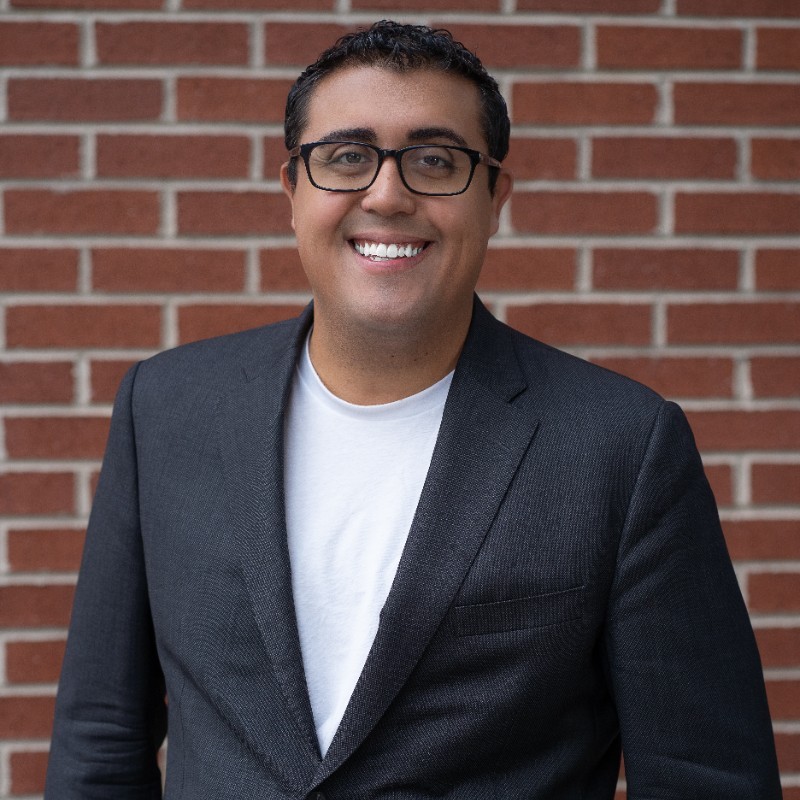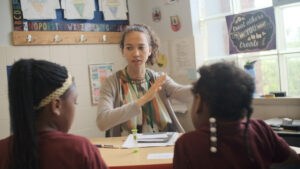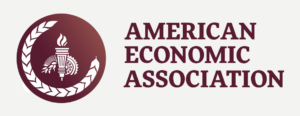Jun 2024
NBER Working Paper: Can Technology Facilitate Scale? Evidence from a Randomized Evaluation of High Dosage Tutoring
Topics
Projects
This paper outlines results from the Education Lab’s study of a high-dosage tutoring model–what we call “Saga Technology”–which found that substituting some tutor time with educational technology can reduce costs by one-third and halve the number of tutors needed without compromising effectiveness.
High-dosage tutoring is an effective way to improve student learning (Nickow et al., 2024; Guryan et al., 2023). Finding ways to deliver high-dosage tutoring at large scale remains a challenge. Two primary challenges to scaling are cost and staffing. One possible solution is to reduce costs by substituting some tutor time with computer-assisted learning (CAL) technology. The question is: Does doing so compromise effectiveness?
This paper provides evidence from a randomized controlled trial (RCT) of over 4,000 students in two large school districts in 2018-19 and 2019-20. The RCT tested the effectiveness of an in-school math tutoring program where students worked in groups of four, with two students working with an in-person tutor while the other two worked on CAL, alternating roles each day. The tutoring model had per-pupil costs approximately 30 percent lower than the 2-to-1 tutoring model studied in Guryan et al. (2023).
We find gains in students’ math standardized test scores of 0.23 standard deviations for participating students, which are almost as large as the effect sizes of the 2-to-1 tutoring model reported in Guryan et al. (2023). These findings suggest strategic use of technology may be a way to increase the scalability of HDT.
Topics
Projects

The findings from this study mark a pivotal moment for both students and educators, not only within Chicago Public Schools but for school districts across the country. By accelerating learning with high-dosage tutoring that incorporates educational technology, we’re beginning to unlock and understand an innovative approach to education that provides targeted supports to students through extended learning time, helping students thrive in the classroom.
Chief Education Officer of Chicago Public Schools

We’re proud to have a longstanding relationship with the UChicago Education Lab. We’re constantly trying to push the boundaries and be innovative in how we can deliver tutoring to the most students possible, and this study is an exciting example of doing just that. Today’s results help us understand that our high-impact tutoring model is an effective and cost-effective tool to reach more students and help them overcome learning loss, get back on track, and reach their full potential.
Co-Founder and Chief Policy and Public Affairs Officer of Saga Education

Very rarely do you see such a large reduction in cost and no loss in program effectiveness. These findings are exciting because they provide us a pathway to scale and a potential recipe for districts to follow for implementing high-quality differentiated instruction.
Senior Research Director at the University of Chicago Education Lab
Realizing the Promise of High Dosage Tutoring at Scale: Preliminary Evidence for the Field
This technical report outlines preliminary results from the Personalized Learning Initiative showing that high dosage tutoring can be scaled and can work–even when delivered in the aftermath of the pandemic and in diverse academic settings.

Overcoming Pandemic-Induced Learning Loss
The Education Lab’s faculty co-directors, Dr. Jens Ludwig, professor at the University of Chicago, and Dr. Jon Guryan, professor at Northwestern University, published a paper commissioned by the Aspen Economic Strategy Group for its 2023 policy volume.

2023 Video- University of Chicago Education Lab: Looking Back and Forward
Watch our latest video on the Education Lab’s history and vision for the future.

Not Too Late: Improving Academic Outcomes Among Adolescents
Read our academic paper on the early Saga studies published in the American Economic Review.
Latest Updates
Study Finds In-School High-Dosage Tutoring Combining Technology and Tutor Time Can Successfully Accelerate Student Learning, Reduce Costs to Districts
Findings from a study of a Saga Education tutoring model show that in-school high-dosage tutoring infused with educational technology increased learning for students in Chicago Public Schools (CPS) and New York City Public Schools (NYCPS).

Commentary: Counterintuitive strategies for overcoming pandemic learning loss with high-dosage tutoring
The Education Lab’s Monica Bhatt, Jon Guryan, and Jens Ludwig outline strategies for schools and districts to overcome pandemic-induced learning loss and highlight results from our study of a high-dosage tutoring model–what we call “Saga Technology.”

A moonshot for student learning
UChicago Magazine’s Elizabeth Station highlights the Personalized Learning Initiative, through which the UChicago Education Lab and its partners are developing and testing “high-dosage” tutoring programs that seek to fill learning gaps left by the COVID-19 pandemic.
